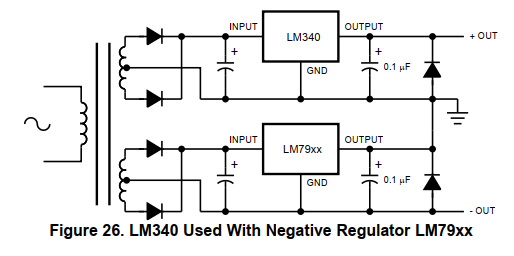Other Parts Discussed in Thread: LM124, LM7800
I am using the LM124AQML-SP for signal condition before going into another buffer op amp that will drive a 12 bit SAR adc. My positive rail will come one before my negative rail and I found the below E2E post on power sequencing for op amps. Will the TVS diodes and silicon rectifier diode configuration described in the post mitigate any errors of my power sequencing?
If I don't add these diodes, will my output go high until the negative rail is powered up?



